The Peculiar Case of the Traveling Worm
Colorado Retina's Drs. Brian Joondeph (vitreoretinal surgeon) and Mark Dacey (uveitis specialist) were presented with the case of a lifetime, one which they had never seen in their many combined years of practicing medicine.
After several months of increased vision loss, a 19-year-old man walked into our clinic with hopes of finding treatment. Drs. Joondeph and Dacey, put their heads together to start the the pre-screening process, only to initially find unremarkable ocular and medical history, VA was 20/20 OD and count fingers OS. An examination of the right eye was normal. The left eye showed extensive retinal pigment epithelium atrophy in the posterior pole but no anterior segment findings, as shown on the flourescein angiogram (Figure 1). No signs of intraocular inflammation such as vitritis, vasculitis, or vitreous cells were noted.
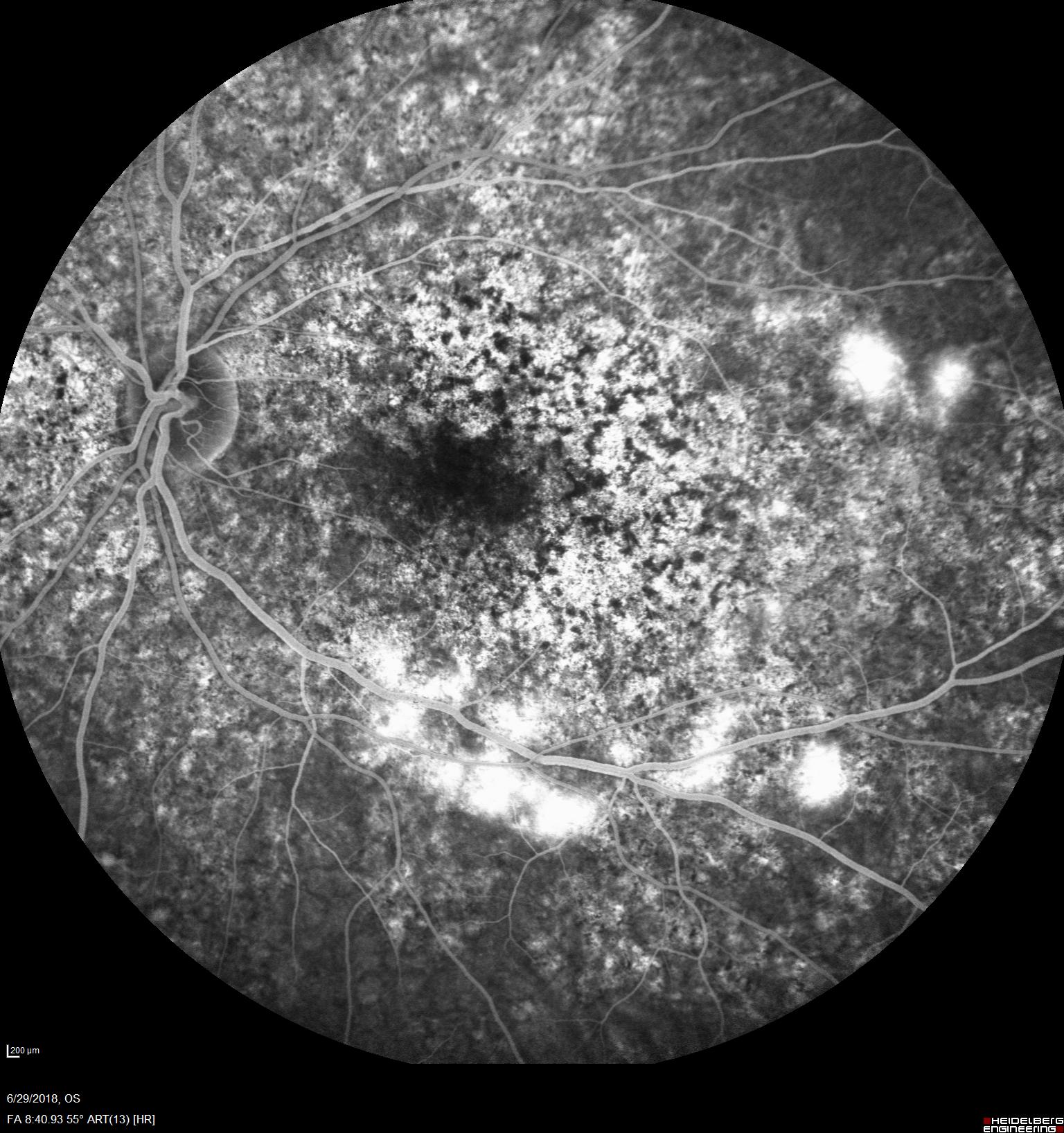
Laboratory workup for causes of uveitis was unremarkable. At his follow-up examination 2 weeks later, color fundus photographs revealed a worm in the superior macula (Figure 2). Fluorescein angiography showed atrophy and focal areas of leakage in the temporal macula.
Dr. Joondeph and Dr. Dacey questioned the patient about recent travel, animal exposure, and dietary or lifestyle changes; he reported nothing significant. We made a diagnosis of diffuse unilateral subacute retinitis (DUSN) and recommended treatment with laser ablation of the worm, oral albendazole, and added oral prednisone to control inflammation.
Laser treatment was initiated approximately 30 minutes after the first color fundus photographs were taken. By that point, the worm could not be located. CRA physicians conducted multiple sessions of color fundus photography and found that the worm had traveled from the macula to the superonasal region near the optic nerve (Figure 3).
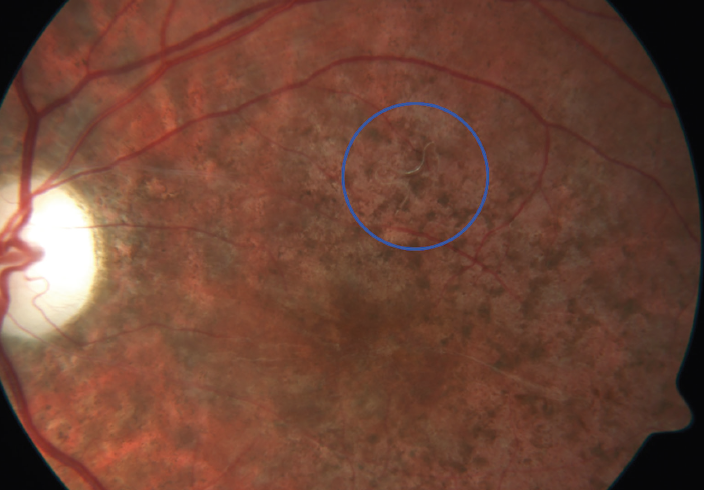
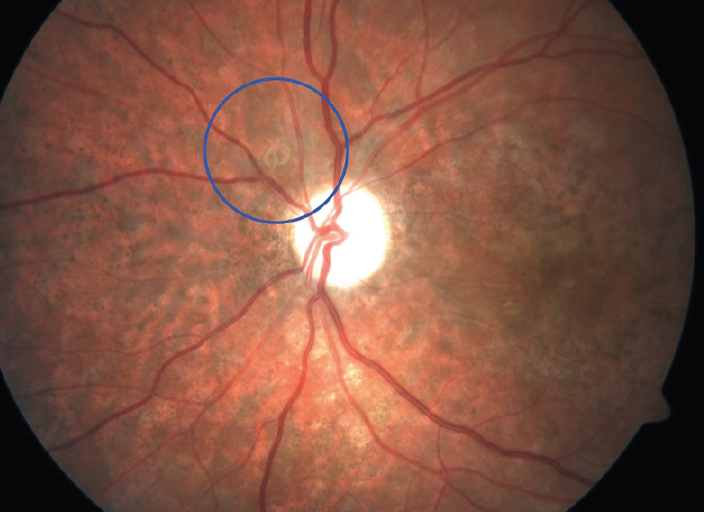
Laser treatment was immediately performed using a large spot size with a long-duration burn (500 µm, 300 mW, 0.5 seconds) to completely photocoagulate the worm before it could move again (Figure 4).
The worm was absent when the patient returned 3 days later. The appearance of the fundus and VA were unchanged from the patient’s initial presentation (Figure 5).
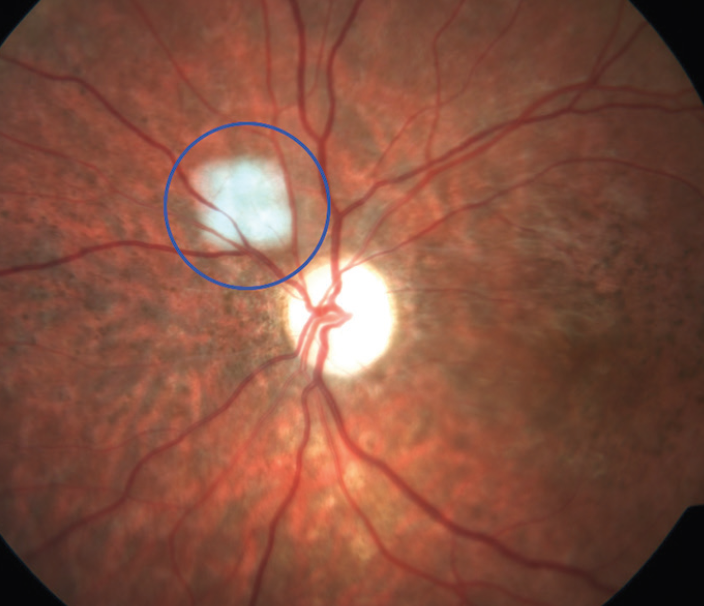
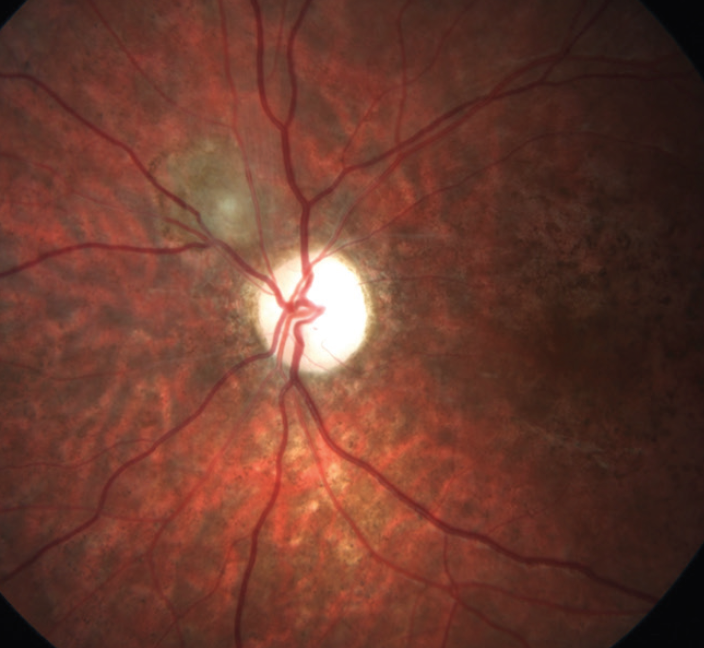
Diffuse Unilateral Subacute Retinitis
DUSN is a rare cause of unilateral vision loss caused by a nematode. Described by Gass in 1978, DUSN occurs in children and young adults. It presents as unilateral inflammation that eventually leads to optic atrophy, diffuse chorioretinal atrophy, and poor vision.1 Unfortunately, DUSN is typically diagnosed late in the disease course and only through recognition of the characteristic worm, as this case illustrates. Despite treatment with laser ablation and anthelmintic drugs, vision usually remains poor.
Ophthalmologists should consider DUSN in the diagnosis of children and young adults with unilateral inflammation, severe chorioretinal atrophy, and disproportionately poor vision.
Gass JD, Gilbert WR Jr, Guerry RK, Scelfo R. Diffuse unilateral subacute neuroretinitis. Ophthalmology. 1978;85(5):521-545.
Mark S. Dacey, MD
• Coordinator, Uveitis Service, Colorado Retina Associates, Denver
• Financial disclosure: Consultant (EyePoint Pharmaceuticals), Consultant and Speaker (AbbVie, Allergan)
Brian C. Joondeph, MD, MPS
• Partner, Colorado Retina Associates, Denver
• Clinical Professor of Ophthalmology, Rocky Vista University College of Osteopathic Medicine, Parker, Colorado
• Financial disclosure: None
Jon Zick, OSC
• Ophthalmic Technician, Colorado Retina Associates, Denver
• Financial disclosure: None
Article Published by Retina Today, October 2019 Edition: The Surgery Issue: As the Worm Turns




